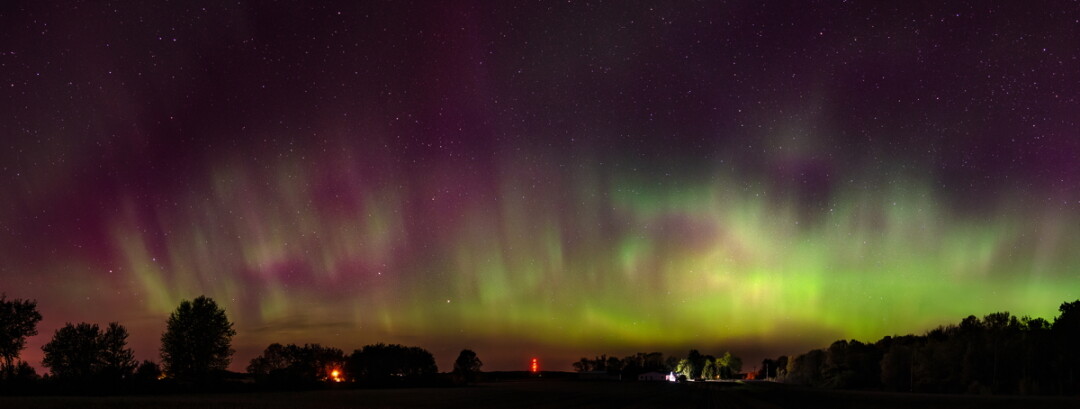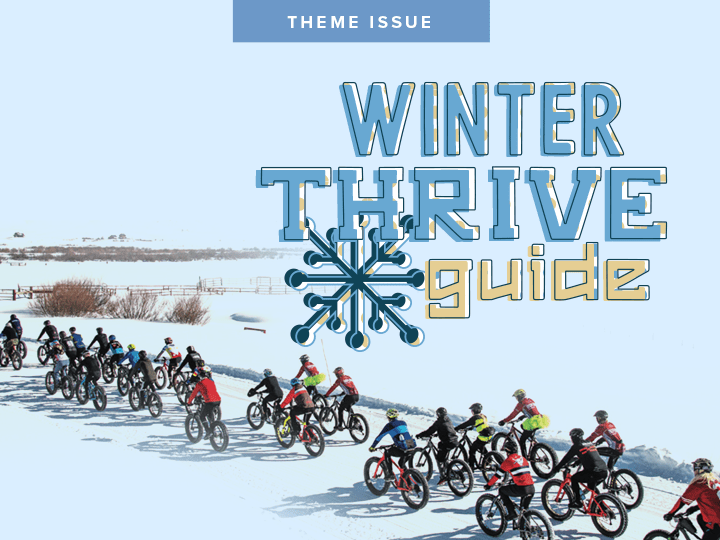Chasing Colors: Aurora borealis inspires photographic hunt
Lauren Fisher, photos by Tim Abraham

Perhaps losing the feeling in your fingertips for the sake of snowshoeing or skiing isn’t a fair trade, but would you risk frostbite for a perfect picture of the quintessential mid-winter sighting: the aurora borealis? Although Wisconsin doesn’t see as much of the gauzy green apparition as more northern locales, aurora hunting is a popular pastime with professional and amateur photographers all over the Chippewa Valley.
Tim Abraham, a professional Eau Claire photographer and dedicated hobbyist, compares the quest for amazing aurora photography to the mushroom hunter’s morel campaign. It takes dedication and patience, and success is an addictive thrill that drives people to try for just one more win. “When you see these waves of green, especially if they’re moving, and the pillars come, oh my gosh your heart just skips a beat,” Abraham said.

A little bit of photography know-how, a tripod, and a camera that allows you to adjust its settings are necessary for taking pictures of the aurora. You’ll want to shoot with the widest aperture you can, with the lens focused on infinity. The ISO should be as high as you can stand so that you can keep your shutter open for as short a time as possible. These settings will allow a photographer to let as much light into the camera as possible over a short period of time, resulting in crisp images that really capture the shapes and swirls of the northern lights.
In order to keep the camera still while the shutter is open, mount the device on a sturdy tripod and weight the whole operation down. Abraham recommends removing the camera strap or any other accessories that could catch the wind, and hooking your camera bag to the tripod as a weight. He usually photographs the aurora with two cameras: one programmed to shoot continuously so he can create a time lapse, and one he stands watch over, snapping in bursts during the most active moments of the show.
The aurora borealis is the reaction between particles from the sun’s atmosphere that have reached Earth and particles from our own atmosphere. It is most active after sun spots fling matter from the star’s surface on solar winds toward our planet. There are a number of websites and applications dedicated to predicting auroral activity a few days in advance Abraham uses a phone application called Soft Serve News. The Geophysical Institute at the University of Alaska Fairbanks provides a forecast at www.gi.alaska.edu. These sites provide a Kp rating to indicate geomagnetic activity level, with higher numbers suggesting more of a chance of seeing the lights. Abraham usually waits until the Kp rating reaches four or higher to go hunting.

If the chances are good, he drives out of town, trying to get away from the light pollution of Eau Claire and surrounding communities. After years of practice, he has several checkpoints where he stops to point his camera into apparent darkness, testing for auroral activity that is too faint for human eyes but visible to a properly programmed device. Once he’s chosen a spot, it’s a waiting game.
“It’s a long process, and you keep looking at your watch thinking, ‘Jeez, work is coming real soon, but this is happening right now,’ ” Abraham said. He often goes out on his own to photograph the lights, wandering into the solitary night to find new settings. Once, he was startled by a herd of cows that crept up to check him out. Some nights, there are less friendly animals around.
“When the coyotes start to go … It’s quite horrific,” he said, describing the sound of their calls.
For Abraham, aurora photography is a personal challenge, and sharing his success is a social activity. “I don’t hunt, I don’t fish,” he said. “Photography is my therapy, my thing. … I suppose there’s a little ego in it, in that ‘I did it and you didn’t.’ ” He loves showing others things they might never see on their own, and texting other hunters during an active night. Often, when he’s on the side of the road with his lens pointed north, he has to refrain from stopping motorists in their travels to point heavenward. “Look what you’re missing!” he wants to tell them as the colors swirl on the horizon.

